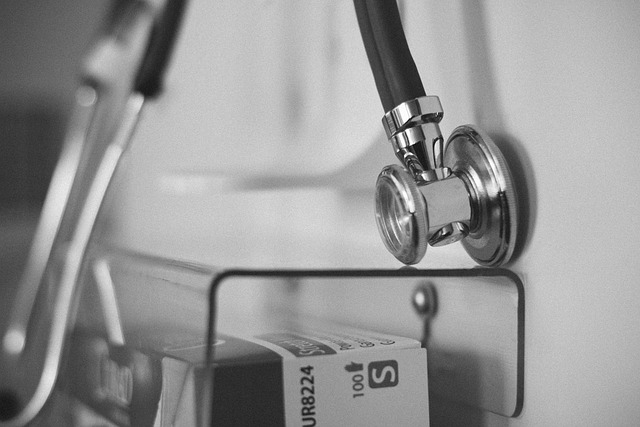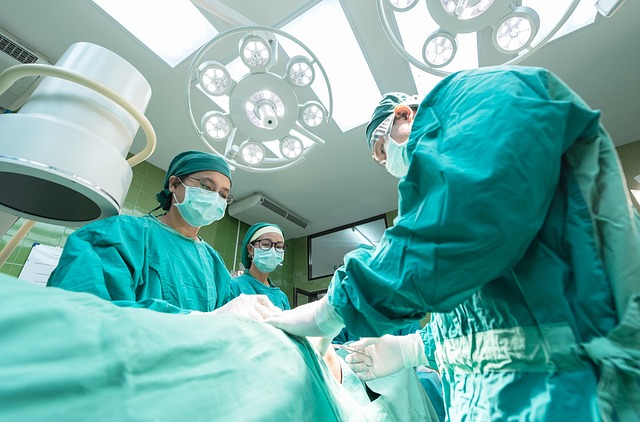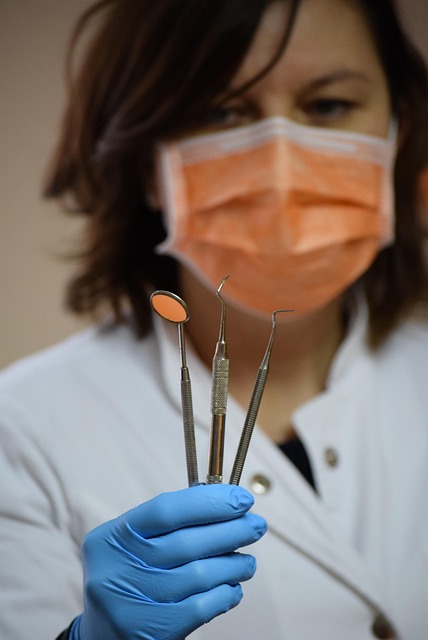Advanced imaging technologies like MRI, CT, and ultrasound are revolutionizing regenerative medicine by offering unprecedented insights into tissue regeneration, stem cell distribution, and organ functionality. These tools enhance diagnostic accuracy, enabling personalized treatment plans and optimized outcomes. High-resolution imaging techniques allow doctors to visualize cellular activities at a molecular level, tracking stem cell therapies and detecting early signs of complications. Cutting-edge technologies like MRI-guided treatments and ultrasound-guided stem cell injections have shown improved recovery times and reduced procedure times. The future holds promise with emerging molecular imaging and AI integration, aiming to personalize regenerative treatment plans based on individual patient needs.
In the realm of regenerative medicine, precision is key to achieving optimal patient outcomes. Advanced diagnostic tools are revolutionizing treatment accuracy by providing detailed insights into complex biological processes. This article explores the transformative power of modern imaging technologies in regenerative treatment. We delve into the benefits of using cutting-edge diagnostic tools, innovative visualization techniques, and real-world case studies showcasing improved diagnosis and enhanced patient results. Additionally, we gaze into the future, examining trends that will shape imaging for regenerative treatments.
- The Role of Advanced Imaging Technologies in Regenerative Medicine
- Enhancing Treatment Accuracy: Benefits of Using Modern Diagnostic Tools
- Innovative Techniques for Visualizing and Assessing Regenerative Treatments
- Case Studies: Success Stories of Improved Diagnosis and Patient Outcomes
- Future Prospects: Trends Shaping Imaging for Regenerative Treatment
The Role of Advanced Imaging Technologies in Regenerative Medicine

Advanced imaging technologies play a pivotal role in shaping the future of regenerative medicine, revolutionizing how healthcare professionals approach and accurately diagnose various conditions. These cutting-edge tools offer unparalleled insights into the human body’s intricate structures, enabling more precise and effective treatment strategies for regenerative therapies.
Through techniques such as magnetic resonance imaging (MRI), computed tomography (CT), and ultrasound, doctors can now visualize tissue regeneration, monitor stem cell distribution, and assess organ functionality in real time. This capability is particularly beneficial for personalized medicine approaches, where imaging data guides tailored treatments for individual patients. By enhancing diagnostic accuracy, these technologies ensure that regenerative treatment strategies are optimized, leading to improved outcomes and better patient care.
Enhancing Treatment Accuracy: Benefits of Using Modern Diagnostic Tools

In today’s digital era, advanced diagnostic tools are revolutionizing the way medical professionals approach treatment accuracy. One such tool that has gained significant traction is imaging for regenerative treatments. By employing cutting-edge technologies like high-resolution MRI and CT scans, doctors can now visualize the human body at a microscopic level, providing detailed insights into tissue structure and function. This enables more precise diagnoses, especially in complex cases where traditional methods might fall short.
The benefits of using modern diagnostic tools extend beyond improved accuracy; they also facilitate personalized treatment plans. For instance, advanced imaging techniques allow medical experts to identify specific areas requiring regenerative interventions, such as damaged joint cartilage or weak muscle fibers. This targeted approach optimizes the effectiveness of treatments like stem cell therapy and platelet-rich plasma (PRP) injections, ensuring that resources are directed precisely where they are needed most.
Innovative Techniques for Visualizing and Assessing Regenerative Treatments

In the realm of regenerative medicine, advanced imaging techniques have emerged as powerful tools to visualize and assess the effectiveness of treatments. These innovative methods go beyond traditional diagnostic imaging by providing high-resolution insights into tissue regeneration processes. Through the use of specialized imaging for regenerative treatment, medical professionals can now track the progress of stem cell therapies, monitor the growth of new tissues, and identify early signs of adverse reactions or complications.
One such technique is molecular imaging, which allows researchers to visualize cellular activities at a molecular level. This enables them to track the migration and differentiation of cells used in regenerative treatments, ensuring they target the desired areas effectively. Additionally, advanced optical imaging technologies offer non-invasive ways to examine tissue structure and function, providing dynamic views of healing processes. These innovative imaging for regenerative treatment approaches hold immense potential to enhance precision, safety, and outcomes in various medical applications.
Case Studies: Success Stories of Improved Diagnosis and Patient Outcomes

In recent years, case studies have showcased remarkable improvements in diagnosis and patient outcomes thanks to advanced diagnostic tools, particularly in the realm of imaging for regenerative treatments. These success stories highlight the power of leveraging cutting-edge technology to enhance precision and effectiveness. For instance, a study published in The Journal of Regenerative Medicine described how high-resolution magnetic resonance imaging (MRI) techniques allowed doctors to accurately identify damaged tissue in patients undergoing regenerative therapies. This early and precise detection led to more targeted treatments, resulting in faster recovery times and better overall patient satisfaction.
Another compelling example involves the use of advanced ultrasound technology for guiding regenerative injections. A clinical trial reported in Ultrasound in Medicine & Biology demonstrated that real-time ultrasound imaging significantly improved the accuracy of injecting stem cells into damaged joints. This minimally invasive approach not only reduced procedure time but also minimized complications, demonstrating the significant impact of advanced diagnostic tools on improving treatment outcomes and patient care.
Future Prospects: Trends Shaping Imaging for Regenerative Treatment

The future of imaging for regenerative treatment looks promising, with several emerging trends poised to revolutionize healthcare. One key trend is the development of advanced molecular imaging techniques that can track cellular and tissue regeneration processes in real-time. This enables doctors to monitor the effectiveness of regenerative therapies and make data-driven adjustments, ultimately improving patient outcomes.
Another significant prospect is the integration of artificial intelligence (AI) and machine learning algorithms into imaging systems. AI-powered analytics can analyze vast amounts of medical image data, identify patterns, and predict disease progression or response to treatment. This predictive capability has the potential to personalize regenerative treatments, ensuring they are tailored to individual patient needs, thus enhancing overall treatment accuracy and efficiency.
Advanced diagnostic tools, including innovative imaging technologies, are revolutionizing the landscape of regenerative medicine. By enhancing treatment accuracy, these modern tools enable healthcare professionals to make more precise diagnoses and develop tailored regenerative treatment plans. The case studies presented highlight successful outcomes achieved through this improved approach, demonstrating the potential of imaging for regenerative treatment to transform patient care. As technology advances, we can expect further breakthroughs in visual assessment methods, leading to better outcomes and a brighter future for regenerative medicine.
